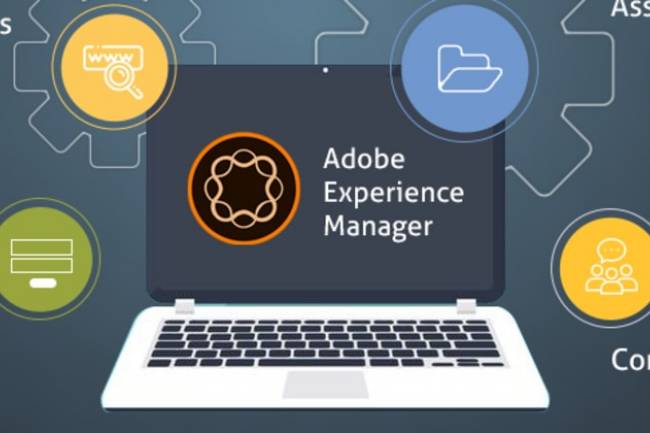
Speed up Your Business With Mobile App Development: Step-by-step Guide for 2021
Today, the mobile app development industry is going through a booming phase. With advancements in technology, you can have applications that can run on multiple platforms without additional efforts. A well-performing mobile app can help your business grow by providing users with an option to easily access your business-related information on their smartphones, establishing a solid online presence.
However, when several companies are taking advantage of mobile application development services, many still do not know how to develop a mobile app. If you consider creating an application for your small to medium-sized business, it becomes crucial to understand the proper process to get the best results. A productive mobile app development process goes through six critical stages. This article will tell you about all these phases in a step-by-step manner to make your business-level app development process successful.
Mobile App Development Lifecycle
Being a business owner, you might have an idea of what your mobile app should look like, and that’s pretty good for a start. However, before shifting to the development stage, you need to go for profound research - research about your business perspectives, target audience and your competitors in the market. After the study, you might answer the following crucial questions before proceeding with the development phase. Here they are:
-
What is the goal of your application?
-
Who are you targeting through your mobile app?
-
What platform(s) are you going to use?
-
Which programming languages or frameworks are you going to consider?
-
What is the status of your competitors’ mobile applications? What are the features they have that might not be present in your applications?
-
What makes your application different from your competitors?
-
What is the estimated budget of your mobile app?
-
When are you going to launch your mobile app in the market?
-
How and where will you promote your mobile app?
Before directly moving to the app development stage, it becomes very significant for you to answer the above questions first. For this, you can consult any mobile application development company that has prior experience in this field. After getting the solutions to all these queries, you can proceed with the first stage of the mobile app development process, and that is ‘Strategy formation’.
Strategy Formation
In the first stage of the app development process, you need to formulate a strategy according to
which you will shape the idea of your app into an actual mobile application. The plan you prepare in this stage will focus on your mobile application’s goals and objectives. This phase is somehow similar to the prerequisites we have mentioned above. It includes:
-
Determining the app users
-
Researching about the market competition
-
Establishing your mobile application’s goals and objectives
-
Choosing a mobile platform for your application
Analysis and Planning
At this stage, your theoretical idea starts taking a practical form. Here, you plan the app’s functional requirements and analyze them with the available facts and cases. After the identification of the requirements, you need to prepare a product roadmap. This process includes prioritizing the app requirements and assembling them into delivery milestones.
During the planning part, you have to identify the skills required to develop your mobile application. For instance, if you plan to create an app that can work both on Android and iOS, you need to hire a mobile application development company consisting of both Android and iOS developers.
UI/UX Designing
It is one of the crucial stages of the mobile app development process as it can decide whether your users will likely interact with your application or not. You need to design your app to provide a seamless and smooth user experience (UX) to the people using it. The primary goal of this stage is to create an interactive user interface (UI) to make your app intuitive and user-friendly. This stage has further five parts:
-
Information Architecture and Workflows: The first step includes determining the information your mobile app will display to the users, the data it will collect from them, and the user journeys throughout the app.
-
Wireframes: These are the digital forms of the sketches of your app’s design. With wireframes, you can sketch a conceptual layout of your mobile application.
-
Style Guide: Style Guide defines the look and feel of your mobile application. It includes determining:
-
What will be the font of your app’s text?
-
What should be its colour scheme?
-
What will be the look of your company’s brand in this design?
-
Mockups: These are the final rendering of your application’s virtual design. To create Mockups, you need to apply your style guide to the app wireframes.
-
Prototypes: Prototypes are like the final designs that simulate the UX and the workflow of your application expected from the final finished product. Prototyping also offers early-stage testing of your application’s configuration and functionalities.
App Development Stage
It is the stage where the actual development of the application starts. This stage includes:
-
Defining the technical structure, you are going to use
-
Choosing a technology stack
-
Defining the development achievements
A typical mobile app development project includes three integral parts. Here they are:
-
Back-end/ Server-side Technology: Here, you have to plan and pick up the necessary server-side resources needed for the development process.
-
Application Programming Interface: An API is a way to connect your application with the back-end / server-side database.
-
Mobile App Front-end Technology: This is the side an end-user will use.
After the achievement of all the development milestones, the next step is to test your application.
Testing
Until you do not perform thorough testing of the app, your application is not ready for launch. Testing is crucial to ensure that your application is stable, safe and ready to use. For testing your app, you first need to create test cases that direct all the aspects of the testing.
Testing can help record test analysis, app’s software quality assessment, tracking fixes for retesting, etc.
Following are the tests you should take care of while testing your application:
-
User Experience Testing: The key things to examine during this part are visuals, user interactivity, and workflow in order to give a first-hand experience to the users.
-
Functional Testing: This feature ensures that there is no issue with the application’s functionality or whether there are any bugs that a user faces while accessing the app.
-
Performance Testing: In this part of testing, you need to observe the application’s performance which includes whether the app is loading timely, or how well it is responding to the user requests, etc.
-
Security Testing: There is no doubt that security is of utmost importance for any business mobile application. Since there can be user data in your app, it becomes crucial to secure it from any cyber-attacks or vulnerabilities. For this purpose, you need to perform security testing before launching your app.
-
Device and Platform Testing: You need to make sure that your application is compatible with all the platforms and devices you have created your application for. That’s why device and platform testing is a must.
Deployment and User Support
It is the final stage of your mobile app development process. When your development team assures that your mobile application is ready to launch, you need to submit your apps to the dedicated app stores (Google Play Store or Apple App store).
You need to provide your app’s description, title, category, launch icon, app’s screenshots, etc., to the app stores. When your mobile app is live, you need to check its KPI (Key Performance Indicators), track its performance through mobile analytics platforms, resolve the user requests and respond to their feedback. Moreover, you need to update your app regularly to optimize its performance from time to time.
Final Thoughts
Today, the mobile app development process has become necessary for businesses to reach more people and spread brand awareness. However, it would be best if you had experts to consult and assist you from the beginning to the last stage of application development. Therefore, you can hire mobile application development services provided by experienced app development companies and create an app to boost your business’s online presence.













